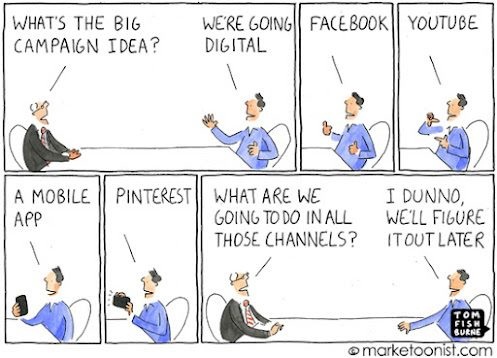The Shifting Sands of Social Media
Thursday, May 24th, 2012There are signs that the social media bubble is preparing to burst. As with the dot com bubble, this does not signal that social media is going away – far from it. Yet a tempering of expectations seems to be looming,  and this allows us to re-examine one of the foundations of competitive success: knowing and serving the customer.
and this allows us to re-examine one of the foundations of competitive success: knowing and serving the customer.
Evidence of a social media “market correctionâ€: General Motors recently announced that it was withdrawing its $10 million dollar paid advertising from Facebook. According to the New York Times, GM continues to spend $30 million maintaining its “free†Facebook page (Hey GM, I know someone who’d do it for $1 million with a $10 million expense budget. Call me.) This budget is focused on creating user testimonial stories and clever graphics they hope will “go viral†– but probably also includes a margin for “we don’t know what we are doing so we’re going to try a lot of stuff and see what sticks.â€
Recently, the clutter and chaos of social media has been depicted in graphic form: Graphic for social media Here’s the equivalent graphic for mobile computing And the differences between different social media platforms have also been depicted through humor. I like this one, but you can enter “social media explained†into the image search of Google and find many more, with applications to specific industries.
In response to this cacophony, the venerable McKinsey & Co. consulting organization has created educational materials to orient C-Suite and senior managers. McKinsey Social Media Videos This collection of videos provides an initial orientation, a baseline description of how consumers engage with social media and some advice about the balance of traditional advertising relative to social media.
As writer David Court points out in another article, one of the biggest challenges facing organizations in communications and marketing is that they don’t know what influences their customers. GM has discovered that paid advertising on Facebook does not; as a result GM is turning its attention to “earned media†– the reviews, the mentions, the articles that are user- or journalist-generated and considered more authentic and reliable by consumers. I expect to see other companies follow suit.
Effective use of social media requires a strategy based on a relational knowledge of the customer. While some of this should be derived through formal research, it’s also a function of a heart-felt connection with those the company is trying to serve. If you’re looking for a place to start with social media, start there.

